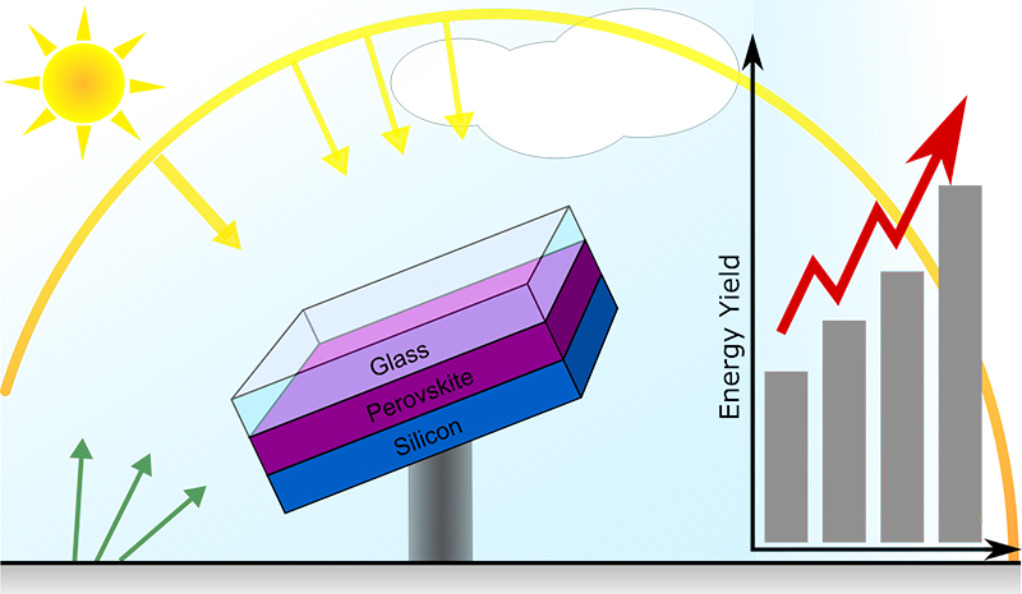Harnessing the Sun: The Latest Innovations in Solar Technology
Solar energy has been around for decades, but recent technological advancements have made it more efficient, affordable, and accessible than ever before. From enhanced photovoltaic cells to innovative storage solutions, the solar industry is in a constant state of evolution. As the world grapples with climate change and seeks sustainable energy solutions, solar technology emerges as a beacon of hope, promising a future where clean, renewable energy is the norm.
Advanced Photovoltaic Cells
Perovskite Solar Cells: These are a new generation of solar cells that promise higher efficiency rates than traditional silicon cells. They are flexible, lightweight, and potentially cheaper to produce. The beauty of perovskite cells lies in their adaptability. They can be integrated into windows, facades, or even wearable tech, making them a versatile choice for various applications.
Bifacial Solar Panels: These panels can capture sunlight from both sides, increasing their energy yield by up to 30%. They are especially useful in areas with high ground reflectance. By harnessing sunlight from both the front and back, bifacial panels maximize energy generation, making them a cost-effective solution for large-scale solar farms.

Solar Storage Solutions
- Lithium-Ion Batteries: The most popular choice for solar storage, these batteries have seen significant improvements in capacity and lifespan. As the demand for renewable energy storage grows, lithium-ion batteries continue to evolve, offering more efficient and longer-lasting solutions for both residential and commercial applications.
- Flow Batteries: Unlike traditional batteries, flow batteries store energy in liquid form, offering longer lifespans and scalability. Their unique design allows for easy expansion, making them an ideal choice for large-scale energy storage projects. Moreover, their longevity ensures a consistent energy supply, even during peak demand times.
Solar-Integrated Buildings
Architects and engineers are now designing buildings with integrated solar panels. These structures not only generate their own power but also contribute to the aesthetic appeal of the building. As urban areas continue to expand, the integration of solar technology into building designs presents a sustainable solution to meet energy demands. Furthermore, these solar-integrated structures often come with added benefits like improved insulation and reduced electricity bills.
Floating Solar Farms
Water bodies are now being utilized to host floating solar panels. This not only saves land space but also reduces water evaporation from reservoirs, serving a dual purpose. Floating solar farms are especially beneficial in densely populated regions where land is scarce. Additionally, the cooling effect of water increases the efficiency of solar panels, leading to higher energy yields.
Solar-Powered Transportation
From solar-powered cars to trains, the transportation sector is tapping into the sun’s energy, reducing the reliance on fossil fuels. As the world seeks to reduce its carbon footprint, solar-powered transportation offers a clean and sustainable alternative. Innovations in this sector are not limited to vehicles alone; infrastructure like roads and bridges are also being designed to harness solar energy.
Transparent Solar Panels
Imagine windows that generate electricity! Transparent solar panels are becoming a reality, allowing for solar energy harvesting without obstructing views. These panels are especially beneficial for skyscrapers and commercial buildings, turning them into energy-generating structures. As technology advances, the efficiency and transparency of these panels are expected to improve, making them a common feature in urban landscapes.

Solar-Powered Desalination
With freshwater becoming a scarce resource, solar-powered desalination plants offer a sustainable solution to convert seawater into drinkable water. These plants utilize solar energy to power the desalination process, reducing the reliance on fossil fuels. As water scarcity becomes a pressing global issue, solar-powered desalination emerges as a beacon of hope, promising a future where clean water is accessible to all.
AI and Solar Energy
Artificial Intelligence is optimizing solar energy production and consumption. From predicting the best times to generate power to efficient energy distribution, AI is revolutionizing the solar industry. Machine learning algorithms analyze vast amounts of data to optimize energy generation and consumption patterns. This not only maximizes energy yields but also reduces wastage, ensuring a sustainable energy future.
The Future of Solar Technology
The horizon of solar technology is bright. With continuous research and development, we can expect even more groundbreaking innovations that will further reduce our carbon footprint and drive environmental change. As scientists and engineers collaborate, the boundaries of what’s possible in solar technology continue to expand. The coming years promise a fusion of technology and sustainability, leading to a brighter, greener future.
FAQs
Perovskite solar cells are a new type of solar cell that uses perovskite-structured compounds. They are known for their efficiency, flexibility, and potential cost-effectiveness compared to traditional silicon cells. The unique structure of perovskite materials allows for enhanced light absorption, leading to higher energy conversion rates.
Floating solar farms are essentially solar panels mounted on buoyant structures that float on water bodies. They are connected to the grid and can generate electricity just like land-based solar farms. The cooling effect of the water increases the efficiency of the panels, and the dual use of water bodies for energy generation and agriculture or reservoir purposes makes it a sustainable choice.
Currently, transparent solar panels are slightly less efficient than their opaque counterparts. However, with advancements in technology, their efficiency is expected to increase in the coming years. The balance between transparency and efficiency is a challenge, but ongoing research aims to bridge this gap.
AI helps in predictive maintenance, optimizing energy production based on weather forecasts, and efficiently distributing energy based on demand. It can also assist in designing solar installations for maximum efficiency. By analyzing vast datasets, AI can predict patterns and optimize energy generation and distribution, ensuring maximum returns on investment.
While it’s hard to predict the exact trajectory, areas like quantum dot solar cells, wireless solar energy transmission, and solar-powered space exploration are gaining traction. The fusion of nanotechnology and solar energy is also an exciting frontier, promising even higher efficiencies and novel applications.
